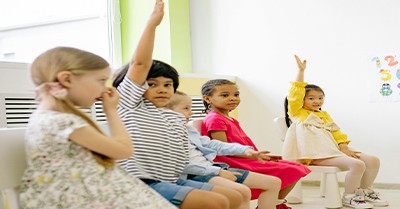In early childhood education, children are not just learners; they are active participants in shaping their environments. One emerging practice gaining traction among educational leaders is the establishment of a children’s council. This initiative provides children with a structured platform to express their ideas, make decisions, and contribute to the life of the centre.
What is a Children’s Council?
A children’s council is a regular meeting—often monthly—where children gather to discuss topics that affect their daily experiences. Guided by educators, the council encourages democratic participation, critical thinking, and collaboration.
Why Introduce a Children’s Council?
- Agency and Voice: Children learn that their opinions matter and can influence real outcomes.
- Decision-Making Skills: Councils nurture negotiation, compromise, and problem-solving.
- Community Building: Shared decision-making fosters respect and responsibility.
- Alignment with EYLF: Embedding children’s voices reflects the Early Years Learning Framework’s emphasis on participation and belonging.
What Can Children Decide On?
Educators in practice have explored a wide range of council topics:
- Menus and Food Choices – Children suggest meals or snacks, encouraging healthy discussions about nutrition.
- Play Spaces – Councils can help design or revamp indoor and outdoor environments.
- Excursions and Events—Children propose outings or special celebrations.
- Safety and Risk Assessments—Older children may contribute to identifying safe practices.
- Learning Projects – Councils can vote on themes or topics for inquiry-based learning.
Challenges and Considerations
- Age Appropriateness: Younger children may need visual aids, prompts, or simplified choices.
- Inclusivity: Ensure all voices are heard, not just the most confident.
- Scaffolding: Educators play a vital role in guiding discussions and translating ideas into action.
- Documentation: Recording council decisions helps track progress and demonstrates children’s agency during assessments and reviews.
Practical Steps to Get Started
- Set a Schedule—Monthly meetings work well for consistency.
- Create a Ritual—Use a special space, talking stick, or council badge to mark the occasion.
- Prepare Topics—Offer 2–3 focus areas each meeting to keep discussions manageable.
- Follow Through—Implement children’s suggestions where possible, and explain decisions transparently when not.
- Reflect Together—Encourage children to evaluate outcomes of their decisions.
A children’s council is more than a meeting—it’s a commitment to honouring children’s voices. By embedding this practice, centres cultivate democratic values, strengthen community, and empower children to see themselves as capable contributors.
Further Reading
Capturing Children's Voices In Early Childhood Settings
Child-Centered Learning
Gathering Children's Voices For The Program
Child Centred Approach
